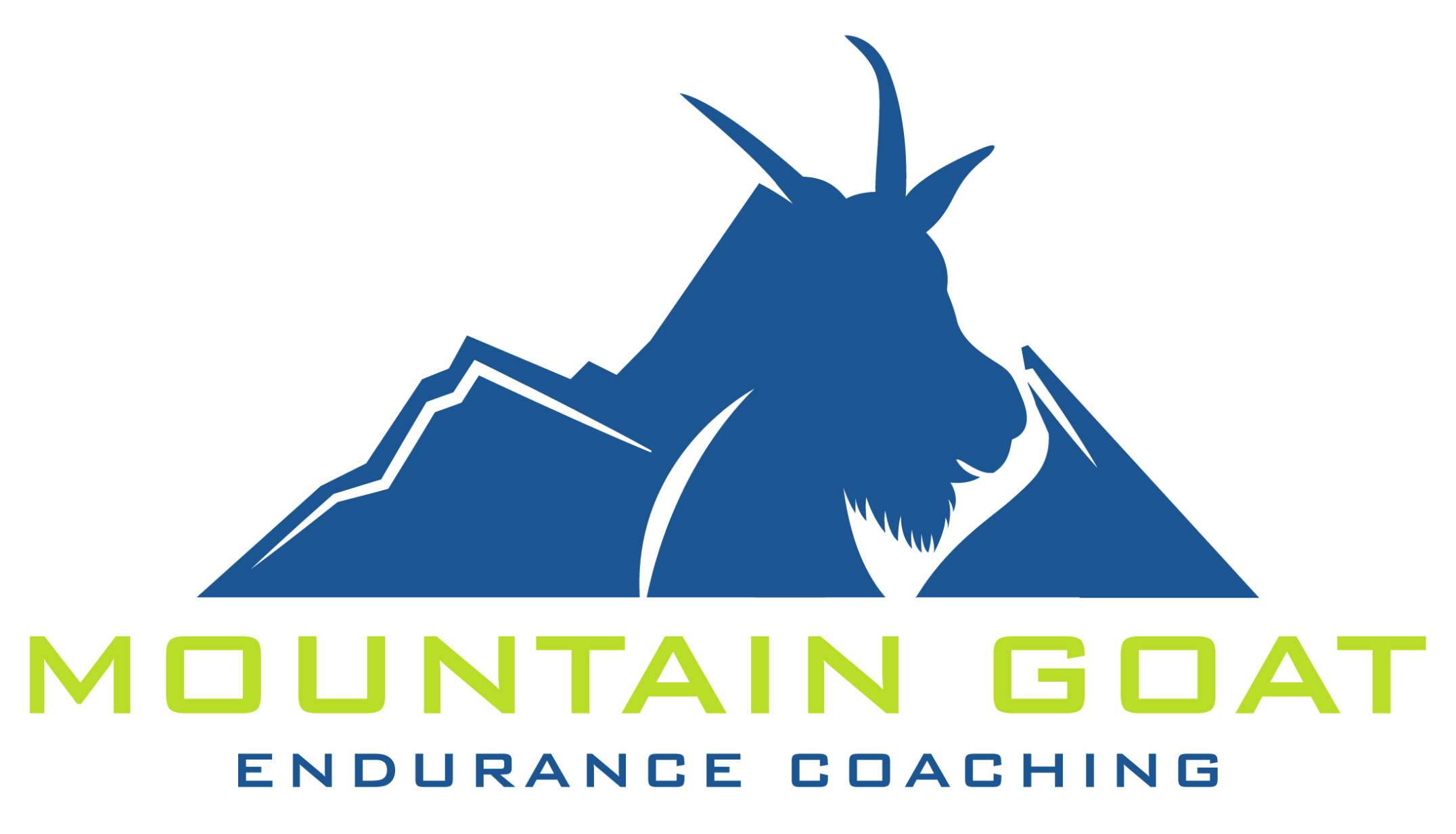*** FAIR WARNING: Long NERD post ahead… ***
If you want to get faster, intervals are essential.
Intervals – sessions of faster, harder efforts interspersed with slower, easier efforts – help you get faster because they reduce risk of injury while allowing for a higher volume of high-intensity work.
For example, if you were trying to stimulate an adaptation to VO2 Max, you have a couple options:
In option 1, you run at a hard, fast, steady pace for about 10 minutes until you burn out.
It would almost certainly stimulate some VO2 Max development.
You’d also likely get tired, your form would degrade, and if you pushed hard enough, you probably couldn’t do that very many times in one week.
In option 2, you run 5 sets of 3 minutes hard, 3 minutes easy.
That allows you to push harder in each interval, spend more total time in the target zone, and recover faster.
Intervals allow much more time at a higher intensity, all while reducing risk for injury.
There’s a reason every high-level athlete does intervals.
Distance or Time
When structuring intervals, you have a couple choices to make.
First: “distance or time?”
If you’re a trail runner and you’re doing your interval workouts on the trails, the answer should be “time.”
Your body doesn’t really understand “distance” or “pace” as much as it understands “time” and “effort.”
On flat ground, you can use distance and pace very effectively.
But they become fairly irrelevant on trails because of the varied terrain and elevation.
Testing
Second, should you do any “pre-training testing?”
Very honestly, most people don’t have to test anything, but a couple tests can be useful if you’ve hit a plateau or are short on time.
That said, before you do any test, you should ask yourself one question:
Will the test actually change how you train?
If not… it’s a waste of your time and you should just start training.
The only real purpose of a test is to help you design more specific, effective training.
Unless you meet these three criteria, testing is likely waste of your time.
- You’re short on time.
- You’ve hit a plateau.
- You do most of your speed work on flat ground.
I’ve had a few athletes do testing, but seeing as most of the people I train primarily run on trails, I don’t typically bother.
VO2 Max Testing
VO2 Max is your top end. It’s the roof of your cardio “house” – every other cardiovascular adaptation is ultimately limited by two things, VO2 Max and muscular power.
The Test
- Run on a track at 8.5 km/hr
- Accelerate by 1 km/hr every 2 minutes
- The fastest speed you can hold for the entire 2 min is your vVO2 Max – your “velocity at VO2 Max.”
To be clear, it’s not your “VO2 Max.” To determine how many liters of oxygen your lungs can use, you have to go to a lab.
Honestly, this is not a particularly helpful test. It only provides very specific information – your vVO2 Max for 2 minute intervals.
If you know how you want to set up your VO2 Max intervals, you could use this test to find the speed you want to hit for the target time.
For example, if you want to do VO2 Max intervals of 3 minutes on, 3 minutes off, you would do the same test as above, except accelerate every 3 minutes.
For the most people, this test is not a great use of your time.
Critical Speed
Critical Speed is an important physiological marker.
If you go above this pace, you will ultimately run into VO2 Max and be forced to slow down.
If you stay below this pace, you could theoretically go forever if someone fed you, watered you, and prevented your muscles from overheating.
There are a lot of ways to test critical speed. The most time effective one I’ve found is the “3 minute critical speed test.” To be clear, it’s not the most accurate, but it will serve most people and doesn’t take you very long to do.
The Test
- Warm up for about 10-15 minutes.
- Run as hard as you possibly can for 3 minutes. Do not pace. Do not try to be consistent. Try to move as fast as you can for every second of the three minutes.
- Your average speed for the last 30 seconds of the test is close to your critical speed.
This test should be deeply unpleasant. You should go really fast to start, hit a wall, keep going, hit another wall… By the end, you’ll likely feel very slow, but I promise you’re going faster than you think.
Bonus: If you know critical speed, you have a good strategy to train lactate threshold as well.
Lactate Test
Lactate is a fuel. If you make more than you use, it starts to accumulate in your blood stream and all the hydrogen ions that come with it make your muscles feel like garbage.
The only real way to test your lactate threshold is in a lab.
If you can’t do that, you could try Joe Friel’s 30-Minute Lactate Threshold Test
The Test
- Run as hard as you can at a steady pace for 30 minutes alone – it has to be alone.
- Your average heart rate for the last 20 minutes is close to your lactate threshold heart rate.
This test does an okay job of estimating your lactate HR. You can use this to target lactate intervals.
You probably don’t need testing
Again, before you do any testing, ask yourself – will the test actually change how you train?
If not… it’s a waste of your time and you should just start training.
They’ve shown that even most recreational athletes do a pretty good job of estimating their critical speed by feel. So unless you’ve hit a hard plateau or are hoping to compete at a very high level, you’re better off just doing a workout.

Types of Intervals
Different intervals do different things. You have different aspects of your physiology and different intervals will help you make different adaptations.
You wouldn’t prioritize your bench press if you wanted to build bigger, stronger legs, right? Instead, you would do squats or deadlifts.
Same idea here.
If you want to target your VO2 Max, you have to do workouts that will help to maximize the desired adaptations.
VO2 Max Intervals
As I said above, VO2 Max is the roof of your cardio “house.” All of your other cardiovascular adaptations are limited by your VO2 Max.
Depending on your training history, you might not need any VO2 Max work. For athletes who’ve been doing intensity work for a long time, it can be very difficult to improve your VO2 Max.
For the rest of us, it’s worth spending 2-4 weeks trying to raise the roof.
Structure
When training VO2 Max, you typically want a 1:1 work to rest ratio.
If you are very new to training, you could do 30-60 second intervals with 30-60 seconds of rest.
If you’re more experienced, you’ll want to target 2-5 minute intervals with 2-5 minutes of rest.
Most people training for an ultra do very well with 3 minutes hard, 3 minutes easy.
Intensity
These should feel hard. They should be a 10/10 effort.
Ideally, you’d hit a fairly steady pace across all of your intervals. The first one might feel hard but doable, while the final interval should be a fight. If you’re forced to slow down for the last 10-15 seconds of every interval, you’re probably hitting the right intensity.
If you’re pretty fast or struggle with your joints, you could do these on an incline. It will let you get the same adaptation while going slower.
Doing these on a decline is not smart.
Frequency
Sessions of 4-10 intervals, 1-3 times per week for 2-4 weeks, 2-3 times per year.
I typically do 4-6 intervals, 2 sessions per week, for 3 weeks, at the beginning of a 6-month training cycle.
If you have 4 months or more to train, these are likely worth your time. If not, you likely want to skip these.
Critical Speed
If you don’t know your critical speed, these are really hard to program.
Here’s an example from Philip Friere Skiba’s book Scientific Training for Endurance Athletes (pg 84).
- Target 4 x 5 minute intervals at 95% of critical speed with 2 minute rest intervals.
Over a few weeks, reduce rest intervals until you can do 20 minutes at once.
Then repeat the process until you can do 2 x 20min at 95% of critical speed.
I don’t think about targeting critical speed very often. For one, they’ve shown that any time you improve lactate clearance (next section), you’ll almost always improve critical speed. I use a lot of lactate intervals in training, so you’ll definitely get that adaptation.
You can also target CS with long-ish pushes in the middle of even longer, easier efforts.
I’ll often program something like, “Go for a 3 hour trail run. Somewhere around the 30-minute mark, start a 30 minute hard push – a little harder than 10k pace. Then return to easy pace.”
Lactate (Tempo)
Tempo intervals are the bread and butter of most interval programs – hard, short-ish pushes that teach your body to better use lactate as a fuel and prevent the buildup of hydrogen ions.
Structure
Intervals should typically be 10-20 minutes. You could make a case for intervals as low as 5 minutes and as high as 30, but almost everyone should probably target the 10-15 minute range
An 2:1 work to rest ratio is appropriate as it gives you enough recovery (both physical and mental) to push hard for the duration of the effort. That said, 5 minutes should be enough if you’re short on time.
Intensity
These should be difficult but doable, an 8-9/10 effort. You should be worked, but not dead at the end of these sessions. You should want to stop, but not have to stop.
Again, you’re trying to target a relatively steady pace for all of the intervals. It will change a bit if doing them on trails, but it should be fairly stable.
That means the first few minutes of each interval probably won’t feel too bad and the first interval should feel easier than the last.
Frequency
You want a total of 30-60 minutes of total work.
30 would be for people new to intervals and 60 would be for high level athletes. Professionals might do up to 90 here, but it would be rare.
Do these 2-4 times per week for ~6 weeks. You can also include them intermittently throughout the rest of the year. Lactate clearance is one of the most trainable parts of your physiology. If you want to get faster, you’ll have to do a lot of lactate intervals.
I typically program 3-4, 12-15 minute intervals intervals, 2-3 sessions per week, for 6 weeks, in the middle of a training cycle.
Then I program one lactate workout every week or two as race day approaches.
“Steady State” intervals
In his book, Training Essentials for Ultrarunning, Jason Koop talks about “steady state” intervals. These are intervals of 20-60 minutes with a short rest interval.
Koop himself will say there isn’t much physiological basis for these, but he finds them important.
It’s often close to a shorter “race pace” – and yes, short is relative to the athlete in question.
You’re above your pure endurance pace, producing and using a lot of lactate, pushing but not killing yourself.
If you can stay hydrated, fueled, and cool you could be here for a long time.
If you don’t hydrate or fuel, you’ll bonk or hit the wall in 1-2 hours.
I never program these. Instead, I write, “Go have fun in the woods, push the pace a little bit, and see what you can do. Practice hydration and fueling.” That will almost certainly hit the target adaptation while giving yourself a bit of a mental break from such rigid time structures.
Let’s be real.
You’re probably not getting paid to do this. If you can drop the precision a bit, have more fun, and get 95% of the benefits… that’s likely a worthwhile trade.
Strides
Strides are great. They’re a low stress way to tap into your top speed. It gets you accustomed to using the explosive power you already have. There’s a reason David and Megan Roche include a lot of strides in their programming.
As do I.
Most of the athletes I coach do some strides almost every week.
I typically like to add 4-10 of them to the end of a 30-45 minute easy run.
A stride comes in 3 parts
- Build to (nearly) top speed over the course of 5-10 seconds
- Hold top speed for 15-20 seconds
- Slow down over 5-10 seconds
These should not be stressful. They should build top end speed and power and you should feel good before, during, and after each one. If you’re tired, don’t do strides – and when you’re doing strides, don’t “go for one more.” If you do that, you’re missing the point.

Want to get faster? Run intervals.
If you want to get faster without getting injured or spending a ton of time, intervals are the key. You should likely be doing some of all of these at some point in your year. If you’re not, you’re missing something and will very likely plateau – if you haven’t already.
You might still have questions like:
- When should I do these in relation to my race?
- What should I prioritize if I have a race in 3 months?
These require a little more personal attention.
Click that “START NOW” button at the top of this page and I’d be happy to help you out.
If you’d benefit from listening or watching something about this instead…
Podcast: Eat Well, Sleep Great, Run Far Episode 24
Video: Trail and Ultra Running Nutrition Live
Those are the same thing. One’s just a lot better to consume in your car while you’re driving.

